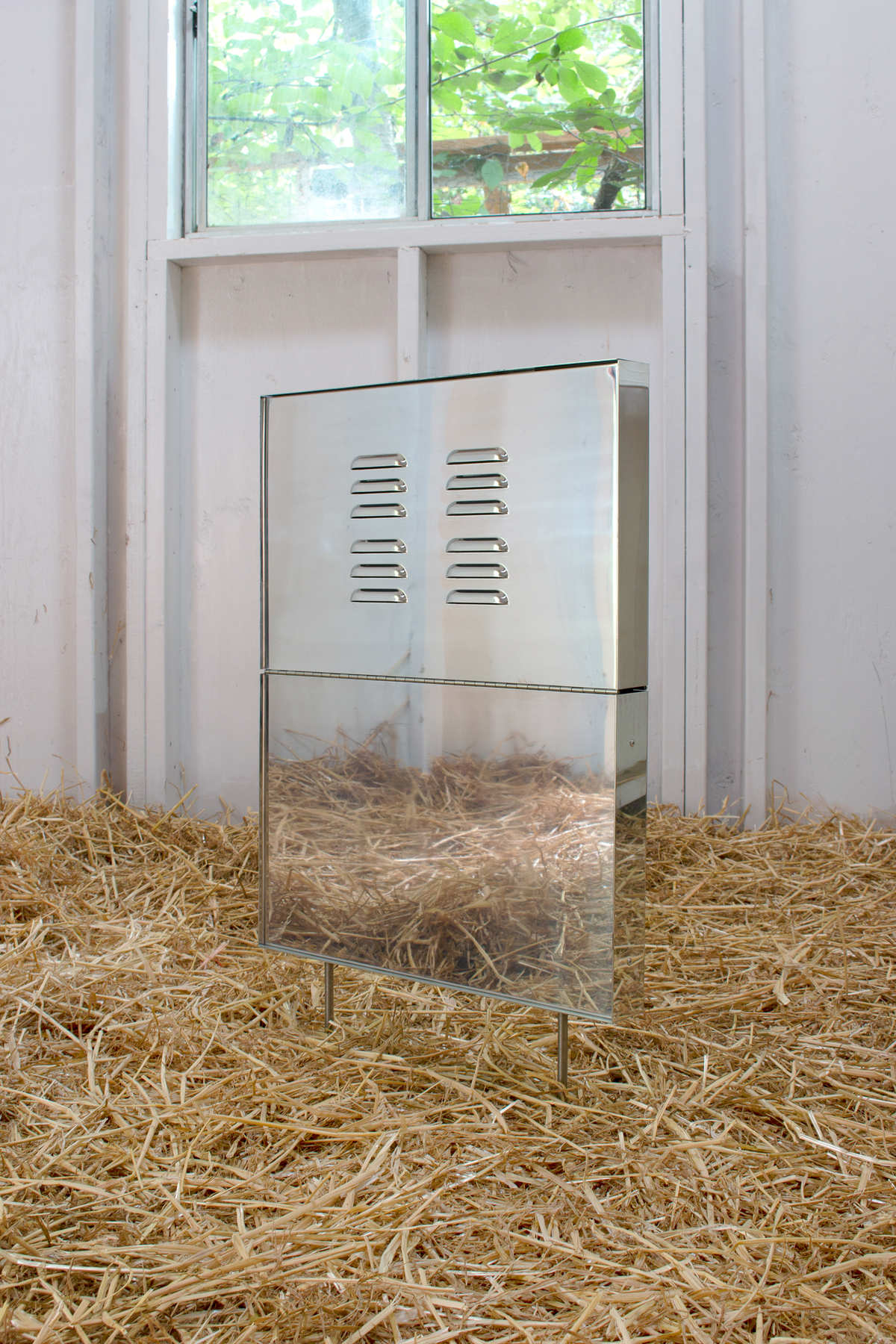Artist: Jesse Stecklow
Exhibition title: Collection Sites
Venue: Chicken Coop Contemporary, Portland, US
Date: July 22 – August 30, 2017
Photography: all images copyright and courtesy of the artist and Chicken Coop Contemporary
Note: work document can be found here
FARM AESTHETICS
Temple Grandin, animal scientist and consultant for the design of livestock handling facilities describes various perceptual distractions and triggers within the physical world:
High contrast is a distraction, like a shiny reflection on metal, or a sparkling reflection in a puddle. Strong changes in light are very distracting to cattle, you need overhead lighting with no shadows. Slowly rotating fan blades are also a high-contrast stimulus. If the fan is turned on and is rotating so fast you can’t see the blades, there is no problem. But when a fan blade is turning slowly it creates a flicker, and that flicker is a much higher contrast image for an animal.
Although the basic fear mechanisms in an animal’s brain and a person’s brain are the same, the difference in frontal lobe size and complexity means that the character of the fear is different. Animals are afraid of tiny details in their environments. They see differences between things more clearly than similarities. They might not see a forest, just trees and more trees. When we see sand, they might be able to perceive a pile of individual grains of sand. Many hays instead of hay.
Within animals, fear can be an ‘edge’ for survival, a form of divination. Fear is anticipation of what is to come based on various markers such as sound, temperature and visual compositions. In deciphering the origins of phobias within domesticated animals, Grandin has found those recurring fears to be perceptual. People can develop a fear of heights while a dog might develop a phobia of small red waving things against a blue sky. An airplane and an elevator are linked conceptually; a red hot air balloon and a red aerial marker are linked only perceptually.
SPACE-TIME TICK CONTINUUM
An area of longstanding interest in comparative cognition is time perception, i.e., the ability to detect the passage of time. In general, time perception has to do with the question of whether other animals live entirely in the present or if they can anticipate a future. For a tick, time and space are dependent on the life of the tick. An Umwelt, as theorised by Jakob von Uexküll, is the world as well as the mind shaped by the world of a particular organism. Functional components such as threats, shelter and food constitute points of reference for navigating that world. For example, the tick waits for components or carriers of significance such as odor, temperature and texture (present in unison) to signal her to jump toward the tissue of her prey, embed her head into its tissue, and suck up a stream of warm blood. What does it mean for the tick to wait if time is based around this one activity and purpose? The tick itself might function in its own world as a clock.
CHICKEN CRITIC
In “What Is it Like to Be a Bat?,” philosopher Thomas Nagel poses that consciousness and experience can not be described in materialist terms (i.e. through a complex network of physical connections and processes in the brain and body) and any attempt to explain consciousness is objective. The example of a bat is used to define that biological sensory mechanisms such as echolocation and sonar vision are methods of perception for a bat, but not descriptive of a bats perspective. If we were to acquire such methods of perception, we would only be able to experience the life and behaviours of a bat and not the mindset. Only a chicken, born as a chicken, knows what it is like to be a chicken.
– Lucy Chinen


















